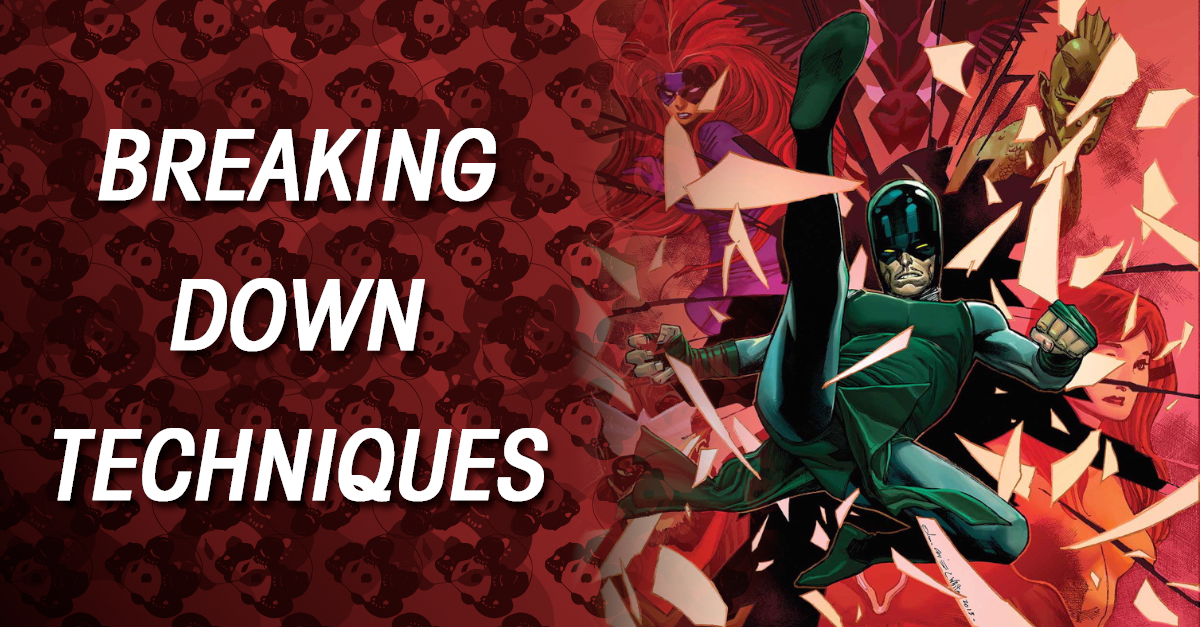
Breaking Down Techniques: Reverse Engineering in BJJ
In the Marvel comic books series about the Inhumans, the character Karnak has the special talent of being able to spot the weakness or flaw in anything, but especially his opponents, and he has the martial arts training to strike the right spot at the right moment to exploit those weaknesses.
While we may not be able to benefit from aliens genetically altering our DNA to gain special powers, we can gain an understanding of the mindset that sees the inner workings of techniques and break them down to their fundamental components, both for ensuring their success and for killing our opponent’s attempts at them.
You can think of this in terms of reverse engineering, the practice of taking something and figuring out how it was put together, usually for the purposes of recreating it. The term usually applies to the commercial world, such as physical products or software, but the basic idea can be used to figure out BJJ techniques. Knowing the inner workings of a technique will improve your understanding of it, and your ability to counter it.
When evaluating a technique, consider these points:
-
Timing and critical moments. Most techniques have a make-or-break moment -- a critical step that must be done just right at the right moment to succeed. These moments are often the key to preventing or countering them. Knowing the timing gives you insight into finding a way to jam them up or break free at the right times.
-
Off balancing, kuzushi, and momentum. Dynamic techniques like sweeps and throws rarely start from a completely static position. They need initiating movements or fake outs in different directions, often opposite to where you will end up being tossed since the hope is you will overcompensate in that direction from the instigating feigned attack.
-
Positioning, angles, and space. Each technique has an optimal angle and uses space, either by filling it or creating it, to achieve its effect. This is often tied very closely to timing and kuzushi, but in the slower, grinding ground fighting positions those are often less of a factor. You can block many techniques by denying angles by moving to where your opponent’s leverage is weakest, or by preventing them from getting the space they need, or by filling up the space they make on your own terms, e.g. posting into it before they sweep you into it, or moving to an angle where they can’t use the space they created.
-
Grips. Some techniques are entirely dependent on certain grips, such as guards like lasso or throws with jacket grips. Assertive, constantly grip breaking is often enough to stop these techniques. When grip breaking is not possible or the right strategy, then denying angles to use the grips or another of the critical points above is likely the solution.
- Transitions and scrambles. Escaping from a tight position can be difficult if not impossible. The chance to escape often comes when the opponent moves to advance position or attack with a submission. If you have someone who is stalling or cautious, rather than waiting for something big that may never come, you may need to find smaller ways to undermine their positioning and persistently and repeatedly find little ways to improve your positioning. Those small improvements do add up.
You multiply your learning potential when you evaluate a technique in a way they lets you see it from both sides: what it takes for it to succeeds, and how it can fail. Both perspectives are valuable to you, and distilling moves down to their core concepts will deepen your understanding of BJJ on the whole.
You can continue your education by reading How to Evaluate a New Technique, Becoming a BJJ Houdini, and The “Thinking 99 Moves Ahead” Myth.
Other articles:
Quick links
Contact us
About us
Quality BJJ gear at fair prices, available all year. Founded in 2012 to provide an alternative to high-cost, limited edition gis. Dive into the BJJ lifestyle with us—join the Panda Nation!"
